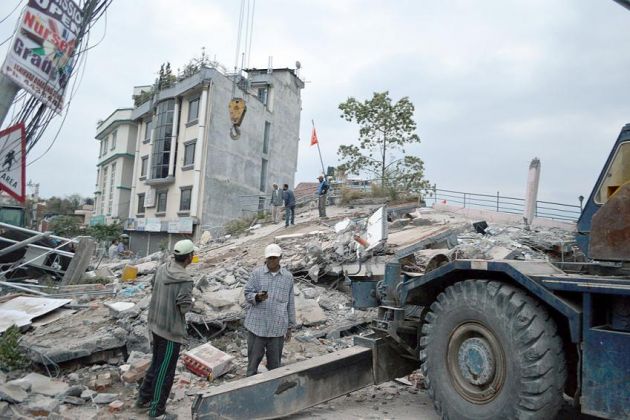Nepal bans pilgrimages to temples after April quake

Nepalese authorities have imposed a ban on visiting places of worship such as temples in the country, saying the earthquake that struck Kathmandu last month puts the stability of the structures in question.
The country is still reeling from the temblor and the government says it is needs to temporarily stop local people and foreigners from visiting Hindu and Buddhist temples.
The ban applies especially to temples whose structures could have been compromised.
In an interview with Asianews.it, a top government official said there is concern due to ongoing aftershocks as some older temples can collapse should another temblor hit Nepal.
"Most of the old structures are cracked and in danger of collapse from one moment to the next, even from strong winds or rain," said Bheshnarayan Dahal, director general of the Ministry of Archaeology.
"If a tourist were to be hurt, it would be a very damaging image for Nepal. So we alerted all the local and foreign faithful not to travel to religious and cultural sites."
Only a few temples survived the earthquake, which directly affected 14 of the 75 districts in Nepal, but authorities are worried its structural integrity could be compromised.
They suspect the structures could give way to the slightest aftershock, or worse, to heavy rains as the monsoon season approaches.
Explaining the ban, Dahal said most of the structures were in mountainous or hilly areas, prone to other natural calamities such as landslides.
"We decided to take this measure to ensure the safety of persons," the official stated. "It shall remain in force until we have rebuilt or made the structures safe."
Another government official said roads leading to the temples are an ongoing concern.
Umesh Jha, director of Nepal's Infrastructures Division, said streets to the temples had rips and cracks due to the quake, while the fast-approaching monsoon season could make rough road travel more difficult.
"The arrival of the monsoon season is expected in three weeks; many streets will be swept away and transport will stop," he said. "This may deter pilgrimages and will create disincentives because of the danger of landslides. We're trying to take precautions, but we have limited resources."
The official death is around 8,700 while about 23,000 people suffered serious injuries. Thousands of victims still lived outdoors out of fear the aftershocks could further damage their houses.